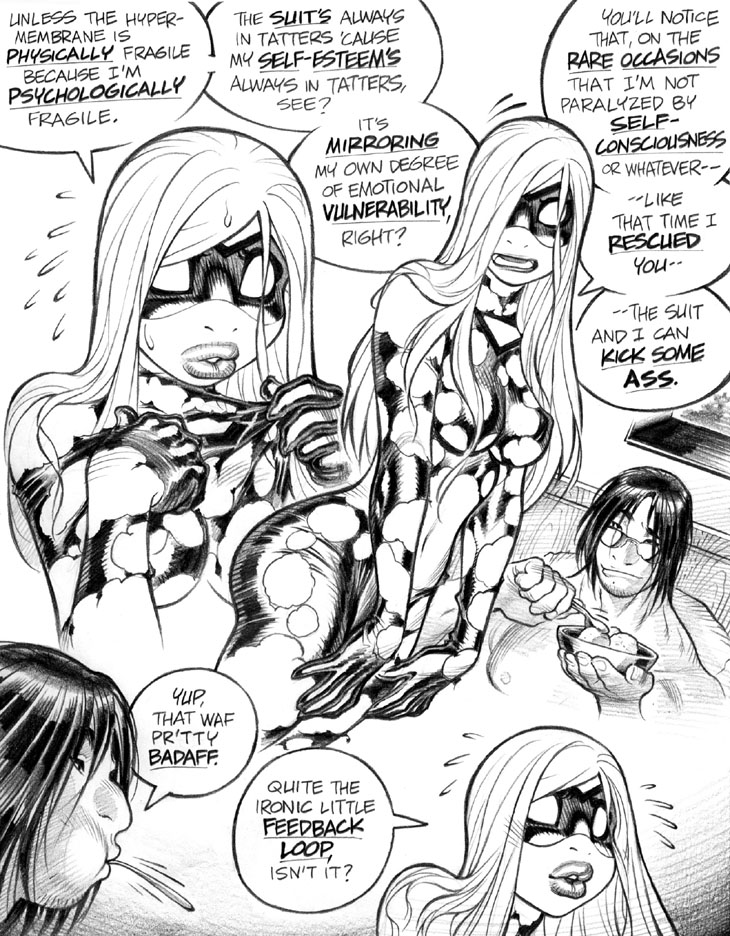Today, I’m continuing crossposting a recent “Subtweet Comics Critique” rant from Twitter. Wheee!
To forestall any nitpicking “art-rules lawyers,” I should state that, yes, some comics can arguably thrive on disconnection and abstraction. Some shoujo manga deliberately use ambiguous settings and unclear storytelling to convey a expressionistic sense of emotional interiority. Establishing shots and conventional storytelling grammar are discarded as audacious shoujo manga goes all-out to portray raw emotionalism. While I prefer the more literalistic shoujo manga of, say, Yumi Tada or Ai Yazawa, I admire the daringness of the more abstracted variety.
Ah, but the (American) comics I’m critiquing have no such excuse, as they’re very much in the concrete, literal mode of shonen storytelling.
Later on, Comic A moves on to abrupt, panel-to-panel scene changes involving its characters off kicking ass in separate locations, but in visual storytelling terms, this doesn’t seem all that different from when they were supposedly in the same room at the story’s start. Not only is the action within a given scene muddled, but it’s also unclear when Comic A is rapidly cutting between one setting and another.
A skilled colorist could help out by using distinct color schemes for different scenes, so we’d know at a glance the setting or timeframe. The comic artist, however, shouldn’t count on being bailed out by a colorist’s skills. Your pages need to be clear and readable in B&W.
When Comic A’s characters get to kickin’ ass, vague and ambiguous narrative geography hamstrings clarity within an individual action scene. Action happens, but the story’s weirdly vague about the menace our heroes are facing, which remains largely unseen and unclearly located. So, wait, exactly where are the bad guys—and who ARE they, really? Dunno, really, as they’re zapping from somewhere off-panel, I guess. One could halfheartedly try to excuse the vagueness by claiming the creative team’s trying to convey chaos or “the fog of war,” but nahh.
The sequence needed panels clearly and concretely setting up the action scene’s environment and the two sides’ battlefield disposition. These missing “action establishing shots” didn’t need to be boring, overhead “Zaxxon downshots” like a tactical RPG videogame, either. We just needed panels in which, say, we saw good guys and bad guys respectively in the foreground and background of the shot—or vice versa.
Ask yourself, “Can the reader decipher at least roughly where the hell everyone is located in this action sequence, and what’s going on?”
End of part 2; onward with further comics-technique ranting with our next Empowered page!
-Adam Warren

